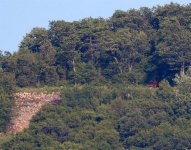PleaseAdvise
New member
I'm not entirely sure how to go about finding what I'm looking for & found myself here, thought to ask you fine people for opinions & information.
I'm looking for something that will allow my Dad to look across the water from his front room to a distance roughly 2 miles to 2&1/2 miles away (roughly 3.2 to 4 kilometers)... I have no idea what to look for in a pair of binoculars that would do that for him. I'd like for him to be able to read text on signs, boats & whatnot as well as see people's faces. He'd be looking out onto a pier that's got a fair amount of tourism & activity, along with the goings on in the water between his place & there.
I'd sincerely appreciate any advise, opinions or information that could be shared with me in finding a good pair of binoculars for him. I know this isn't exactly bird watching specific but for all I know he might take to watching the gulls & how they interact with the seals out there. I just know he likes to look out on the water, people watch & this could help him enjoy that.
Thanks for taking the time!
I'm looking for something that will allow my Dad to look across the water from his front room to a distance roughly 2 miles to 2&1/2 miles away (roughly 3.2 to 4 kilometers)... I have no idea what to look for in a pair of binoculars that would do that for him. I'd like for him to be able to read text on signs, boats & whatnot as well as see people's faces. He'd be looking out onto a pier that's got a fair amount of tourism & activity, along with the goings on in the water between his place & there.
I'd sincerely appreciate any advise, opinions or information that could be shared with me in finding a good pair of binoculars for him. I know this isn't exactly bird watching specific but for all I know he might take to watching the gulls & how they interact with the seals out there. I just know he likes to look out on the water, people watch & this could help him enjoy that.
Thanks for taking the time!




